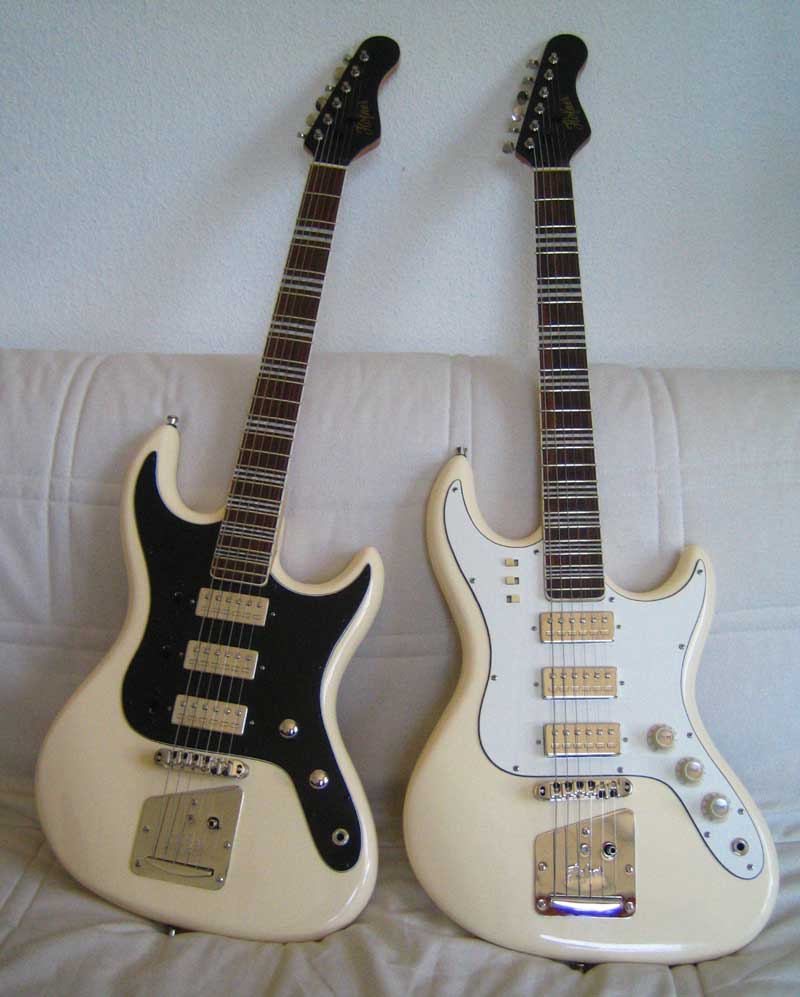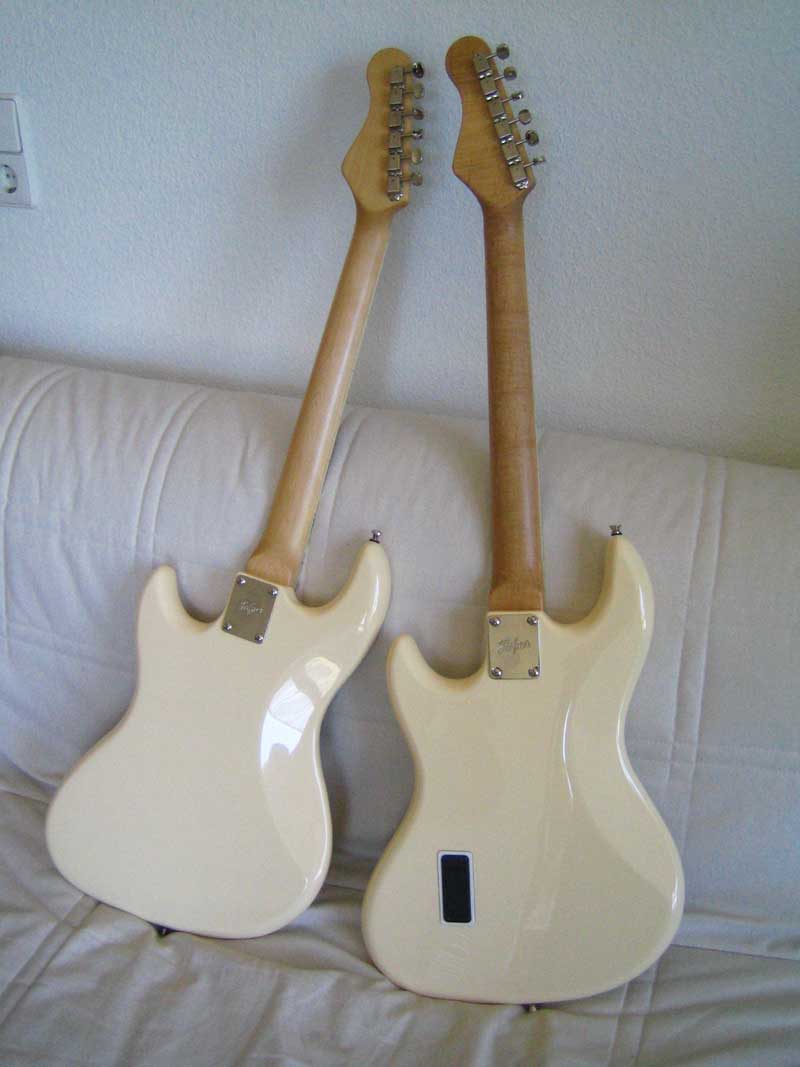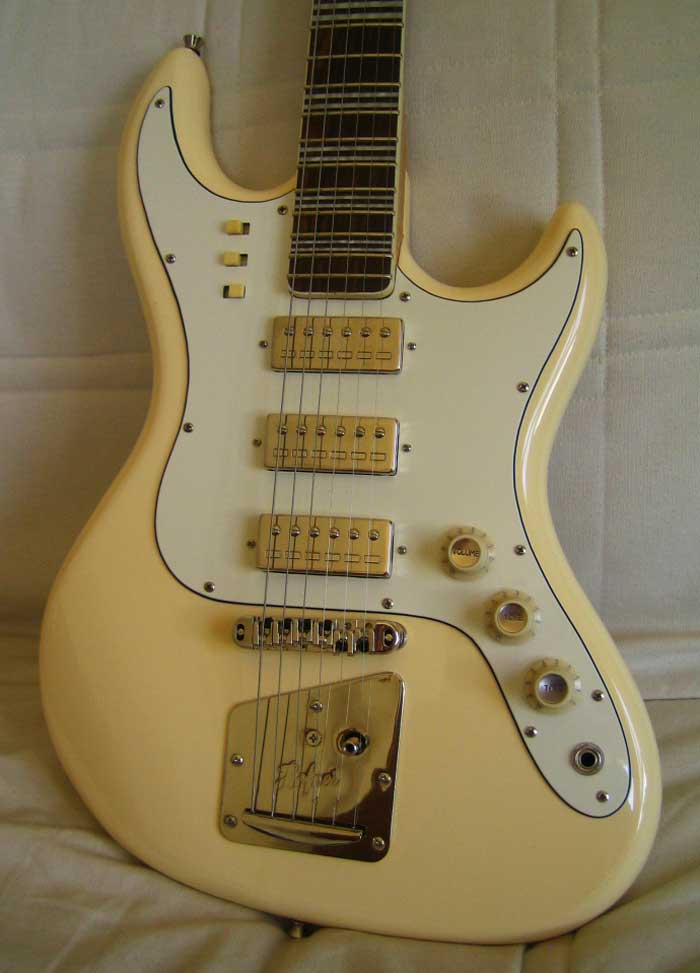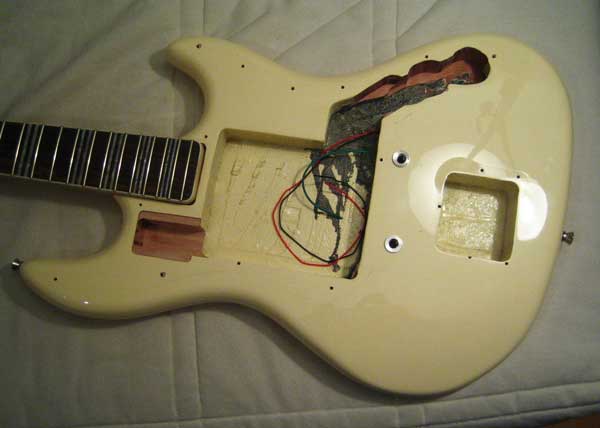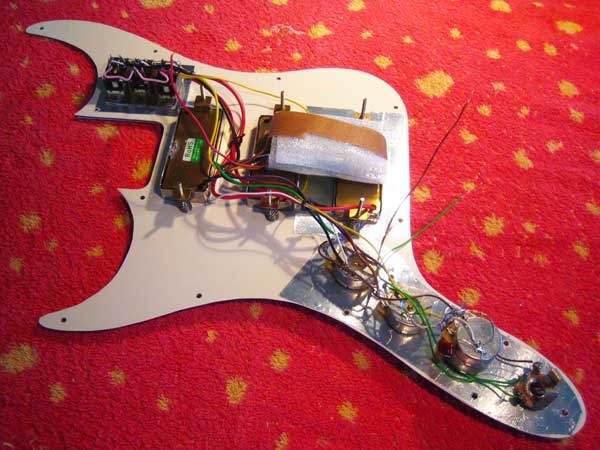Private Test Review
Olaf Pöter / 29-Apr-10
I could not resist buying a second Galaxie. I was
curious as to how this model, which I like so much because of its handling,
shape and look, would sound with active Fender circuitry, which is used on the
Eric Clapton Strat model. Not that I am unhappy with the sound of my first
Galaxie (see My Previous Test Review), but
the Fender electronic boosts the mid's up to 25 dB, and the trebles can be
accentuated by the TBX control too. I have been a Clapton fan since the Cream
days, so I hoped to get closer to his legendary guitar tone.
One thing was clear from the beginning: I would
need a new pickguard, because there were three pots to accommodate instead of
the regular two as fitted by Hofner. So as not to confuse the guitars later, I
manufactured a vintage white pickguard. However, on a white one, the black
original sliding switches do not match, and so I installed an old triple-switch
unit from a Hofner 177 from the late 60s, which has the nice, aged cream colour.
With these slides, the old Hofner pot knobs look best, so I bought a set of
those (now available again from Hofner). I moved the slide switch unit
next to the neck end, where it is more ergonomically accessible than at the
original positions next to each of the pickups.
As the active electronic requires a battery, some
routing work waited for me. I milled out a battery case cavity on the guitar’s
back and I also had to create space for the switch unit and for the additional
pot. Finally, I even managed to solder all twenty cables to the correct spots.
After weeks of work, I was very curious to find out
how Galaxie No 2 would sound compared with Galaxie No 1! My very first
impression was: "Wow - what a 'fat' sounding guitar!" It is much
louder than No. 1, but darker in tone, too. If you crank up the mid-boost, the
tone gets considerably louder, especially with regard to mid- and bass
frequencies, while the trebles go more into the background. This can partly be
compensated by the TBX tone pot though, which reduces the bass frequencies a
little. At louder amp settings, the tone, already without mid-boost, tends to
break up slightly. The more you blend in the mid-boost, the more you add crunch,
up to distortion of the tone. You can therefore control rhythm and solo playing,
just by cranking the boost on and off.
Last night, I tested the modified Galaxie in a band
rehearsal. No – it doesn't sound like a Strat, which features single coils
sounding more aggressive and biting. Its tone is somehow smoother and more
violin like, just like the 60's Cream sound played with various solid bodied
Gibsons. In the loud band context, the guitar cut through very well, not missing
the expected pick attack "quack". I am really enthused! But it is not
easy to tame this guitar! The amp settings are totally different. It will take
many more band rehearsals to become fully acquainted with it.
Back to the Galaxie No. 1: This one does not sound
anything like as loud at the same amp volume setting as No. 2. The tone is also
brighter, with nicely sparkling treble frequencies, well balanced over all
strings, and not as bass-accented like No. 2. So I will keep both of them. No. 1
for rhythm and clean soloing, No. 2 for Blues, heavy Rock respectively crunched
and distorted sounds.
